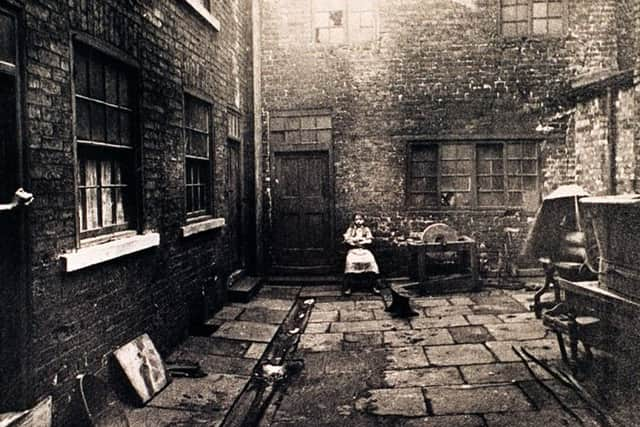How the Leeds cholera epidemic led to medical progress
and live on Freeview channel 276
The tragedy left its scars on the city - but it also laid the foundations for important medical research and analysis which would eventually solve the mystery of the disease's cause.
Cholera had travelled through Asia and Europe the previous year, and is believed to have entered England through the port of Sunderland six months earlier - although quarantine regulations were in place at many European docks. There had been a smaller outbreak in 1826, but this more acute wave killed over 200 people in the month of August alone.
Advertisement
Hide AdAdvertisement
Hide AdA Leeds doctor, Charles Thackrah, had written about the earlier outbreak, which had affected Halton, Chapel Allerton and Kirkstall as well as the city.


With no integrated health services and medical treatment too expensive for most people living in the industrial districts, there was little attempt at a co-ordinated response to the crisis. 2,000 victims were admitted to a special hospital set up in St Peter's Square, where most of the 702 dead spent their final days.
In Leeds, 'patient zero' was the two-year-old son of an Irish couple called the Docks, who were immigrant weavers living in the squalid cul-de-sac Blue Bell Fold, near Marsh Lane on the north side of the Aire. The child died on the same day he fell ill in late May, and the next day their neighbours the Tobins' child also passed away. Twelve victims from the immediate vicinity died within days.
At the time, the prevailing theory among the medical establishment was that cholera was spread through bad air - called 'miasma', although there was some acknowledgement of the fact that slum streets were disproportionately affected. Blue Bell Fold was an unsanitary and overcrowded area, beside a stream which carried industrial effluent from mills as well as domestic sewage.
Advertisement
Hide AdAdvertisement
Hide AdAmong this terror a hero emerged - the local surgeon, Robert Baker. He visited the Dock family and observed the terrible conditions in which they lived. Convinced cholera's spread was linked to poverty, he mapped the locations of all 700 cases of the disease, as well as recording information about the victims. His report, presented to the city authorities after the epidemic had passed, described in vivid detail the overcrowding, raw excrement, livestock living indoors and lack of drainage that were features of the slums. In some cases, over 400 people were found to be sharing just two toilets, while some families had to walk nearly a mile to access the nearest water tap.


Baker actually caught cholera himself during the outbreak, although he survived. He later took a job as a factory superintendent, ensuring that mills did not employ children under the age of nine or overwork their labour force. He lived at Manston Hall, near Crossgates.
Although he did not discover the source of infection, Baker's research was vital in encouraging other medical men to diligently record progress and patterns of disease. It took him several decades to succeed in persuading the Leeds authorities to take action and provide new drainage systems and water supplies.
It was eventually a London surgeon, John Snow, who solved the mystery and worked out, again by mapping the incidences of the disease's spread through the capital, that drinking water contaminated by sewage was responsible for cholera. He famously identified the source of an 1854 outbreak as the water pump in Broad Street, as the majority of victims drank from it - even those who did not actually live nearby. The handle of the pump was removed and the epidemic waned.
Advertisement
Hide AdAdvertisement
Hide AdDuring the construction of the Victoria Gate shopping centre in 2016, archaeologists uncovered 28 bodies of children who had been buried in the graveyard of the Ebenezer Chapel. Most were severely malnourished, and they are suspected to have been some of the victims of the outbreak in what was one of the poorest districts of Leeds.
The outbreak of the disease again in October 1849, when over 2,000 people died in Leeds persuaded the council to act decisively and contracts for the construction of a comprehensive sewerage system for the townships of Leeds, Holbeck and Hunslet were let in 1850. By 1855 the first scheme was complete.